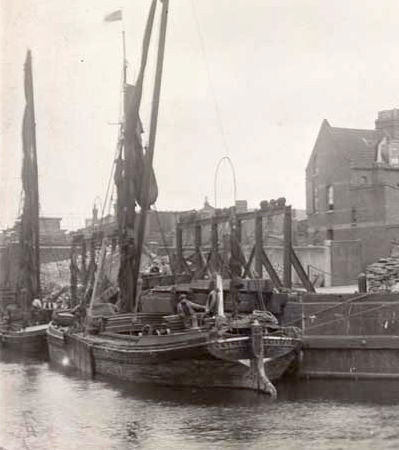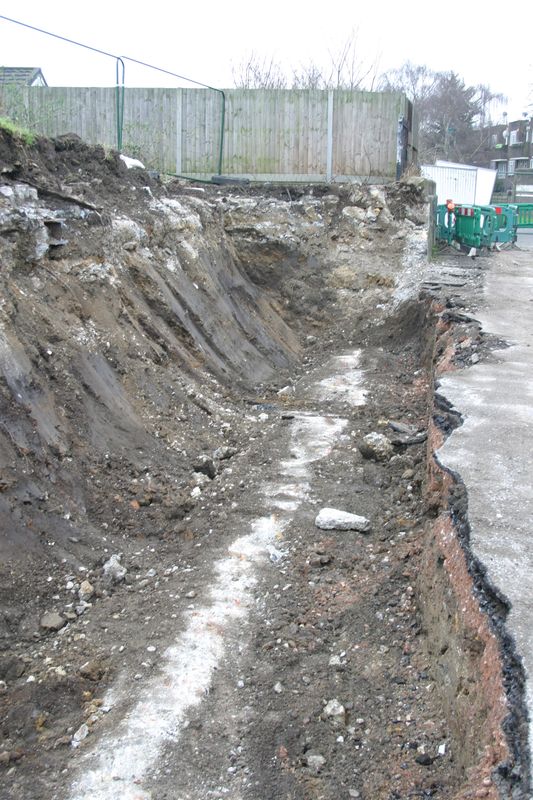You may have seen our blog 2 years ago on this historic bit of Surrey Canal infrastructure. The only remaining section of canal bank, which marked the junction of the Camberwell branch (1810) with the Peckham branch (1830) of the Grand Surrey Canal, has probably stood in this position, if not this state, for 120-150 years.
However, although still absolutely solid, the surface is beginning to crumble and become unsightly, especially for the new flats opposite, and the council have been determined to replace it. Work started at the beginning of 2017 on a like-for-like replacement (rather than suburban bypass-style concrete block planters), as far as funds and practicality allow. The top end of Surrey Canal walk has been closed whilst this happens.

First up was the removal of a two metre-wide strip of the beautifully worn cobbles on the top surface, which now forms the ground level for the Glengall Wharf Community Garden.
The work has been majorly disruptive for the garden, involving the removal of a fine old self-seeded plum tree and many garden structures. However, it was arranged to take place in winter, outside the growing season, to at least minimise this.
These cobbles, known as granite setts, have been taken up with a JCB and as far as possible preserved for replacement when the wall work is complete. It was thought that they’d been set solidly in concrete, but they’ve mostly come away cleanly, minus a few breakages.


Around the end of January, work started on excavating beneath the garden surface and removing soil from behind the wall. Here things got interesting for the contractors, as they discovered the foundations of the rubbish chutes, visible in the photo beneath, and on our previous blog






















